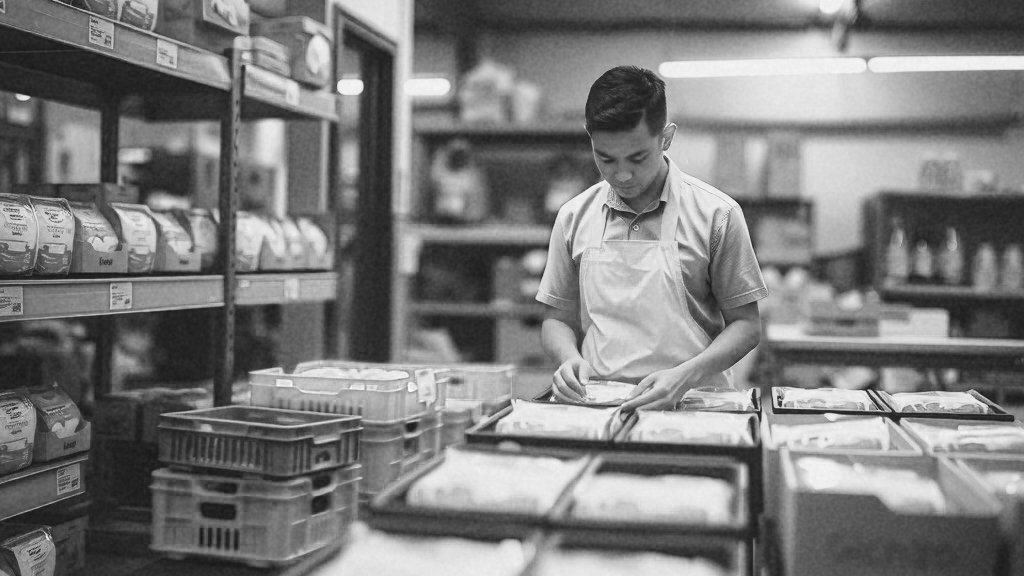Future-Proofing Food & Beverage CPG Brands: Forecasting Strategies for 2025

In 2025, the ability to forecast financial health and adapt to rapid changes in the market will define success for food and beverage CPG brands. With omnichannel sales becoming the norm and customer expectations evolving at breakneck speed, financial modeling systems are no longer optional—they’re essential.
This guide delves into how food and beverage brands can leverage omnichannel financial modeling systems to manage complexities, streamline decision-making, and avoid forecasting pitfalls. From unifying data across platforms to scenario planning and automated reporting, these strategies will help brands navigate 2025 with confidence.
Why Omnichannel Financial Modeling is a Game-Changer
In a market dominated by eCommerce, retail, and DTC sales, food and beverage brands face a unique challenge: managing multiple channels seamlessly. Omnichannel financial modeling provides the tools to integrate and analyze data from disparate sources, delivering clear, actionable insights.
How These Systems Help Food & Beverage Brands
1. Unified Data Insights
Omnichannel systems centralize data from platforms like Shopify, Amazon, and retail POS systems. This integration allows brands to:
- Track customer behavior: Understand purchase patterns across online and offline channels.
- Optimize channel ROI: Identify top-performing sales channels to allocate resources more effectively.
For example, a CPG brand launching a new organic snack can use unified data to monitor how the product performs in grocery stores versus online marketplaces.
2. Scenario Planning
Food and beverage brands often face unexpected challenges, such as ingredient shortages or regulatory changes. Scenario planning with financial models enables brands to:
- Simulate price increases due to rising raw material costs.
- Assess the impact of a new product line on overall profitability.
This proactive approach helps brands remain agile in the face of industry uncertainties.
3. Automated Reporting
With financial models generating real-time reports, brands can:
- Reduce reliance on manual data entry, which saves time and minimizes errors.
- Share updates with stakeholders quickly, fostering transparency and alignment.
A monthly automated report showing production costs and sales trends can empower decision-makers to pivot strategies when needed.
Key Pain Points for Food & Beverage CPG Brands in 2025
Forecasting in the CPG space presents unique hurdles that require attention and strategy to overcome.
1. Data Silos and Fragmentation
Many brands operate with disconnected systems, making it hard to gain a full picture of financial health.
- Solution: Invest in integrated tools that sync inventory, marketing, and sales data across all channels.
2. Seasonal Demand Swings
With products like holiday-themed beverages or summer snacks, forecasting demand spikes can be tricky.
- Solution: Use historical sales data and AI-driven analytics to prepare for fluctuations.
3. Rising Costs
Ingredient prices and shipping rates are expected to rise in 2025. Brands that lack visibility into true costs risk shrinking margins.
- Solution: Use financial modeling to track the full cost of goods sold (COGS) and adjust pricing strategies accordingly.
4. Customer Acquisition Costs (CAC)
As online ad competition increases, so does the cost to attract new customers.
- Solution: Focus on increasing customer lifetime value (LTV) by nurturing repeat purchases through loyalty programs.
5. Supply Chain Disruptions
From delayed shipments to ingredient shortages, supply chain issues can derail profitability. Solution: Build forecasting scenarios that account for delays and adjust order quantities in real time.
Strategies to Reduce Complexity & Avoid Forecasting Pitfalls
Reducing complexity is key to thriving in 2025’s competitive environment. Here’s how food and beverage brands can simplify their approach:
1. Adopt Centralized Platforms
Use systems like NetSuite or Microsoft Dynamics to unify financial data across channels. This eliminates the guesswork and speeds up decision-making.
2. Simplify KPIs
Focus on metrics that matter most: gross margin, customer churn, CAC, and inventory turnover. Avoid being bogged down by vanity metrics.
3. Train Your Team
Forecasting tools are only as effective as the people using them. Invest in training programs to ensure staff can confidently use systems and interpret data.
4. Plan for the Worst
Use pessimistic scenarios to prepare for potential disruptions. This ensures you have a contingency plan if something goes wrong.
5. Test Regularly
Pilot new forecasting models on a small scale before rolling them out company-wide. Testing minimizes the risk of errors and allows for adjustments.
Best Practices for Forecasting Success in Food & Beverage
Food and beverage brands need to embrace industry-specific forecasting practices to stay ahead.
1. Account for Seasonality
Use past sales trends to predict demand for seasonal products. Collaborate with suppliers early to secure materials for high-demand periods.
2. Focus on Profitability
Identify low-margin SKUs and either improve efficiency or phase them out. Monitor ingredient and production costs to ensure pricing remains competitive.
3. Leverage Technology
Invest in AI-driven analytics to gain deeper insights into customer behavior and demand forecasting. Automating inventory restocking can also reduce waste.
4. Balance Innovation with Stability
Launch new products strategically while maintaining focus on best-sellers. Forecasting tools can help assess the profitability of both.
5. Collaborate Across Teams
Ensure marketing, operations, and finance teams are aligned. Centralized data and regular cross-department meetings foster better collaboration.
As food and beverage brands prepare for 2025, accurate forecasting will remain essential for navigating challenges and seizing opportunities. By investing in omnichannel financial modeling systems, addressing key pain points, and adopting best practices, CPG brands can reduce complexity and focus on what truly matters—delivering great products to their customers. With the right tools and strategies, forecasting becomes more than a numbers game—it becomes the foundation for sustainable growth and success.
I am an Ad-Age, Emmy, Shorty, Telly, and Webby Award-Winning Social Media Strategist and Content Creator specializing in outdoor lifestyle, adventure, travel, and recreation brands. With nearly 20 years of experience crafting compelling digital stories, I have driven the success of numerous outdoor lifestyle, food & beverage brands and television series. My expertise lies in creating engaging content that resonates with audiences, fostering strong online communities, and bringing innovative storytelling techniques to the forefront of social media strategy.
adage, emmy, telly & webby award-winning digital marketing consultant for purpose-driven food & beverage brands.





